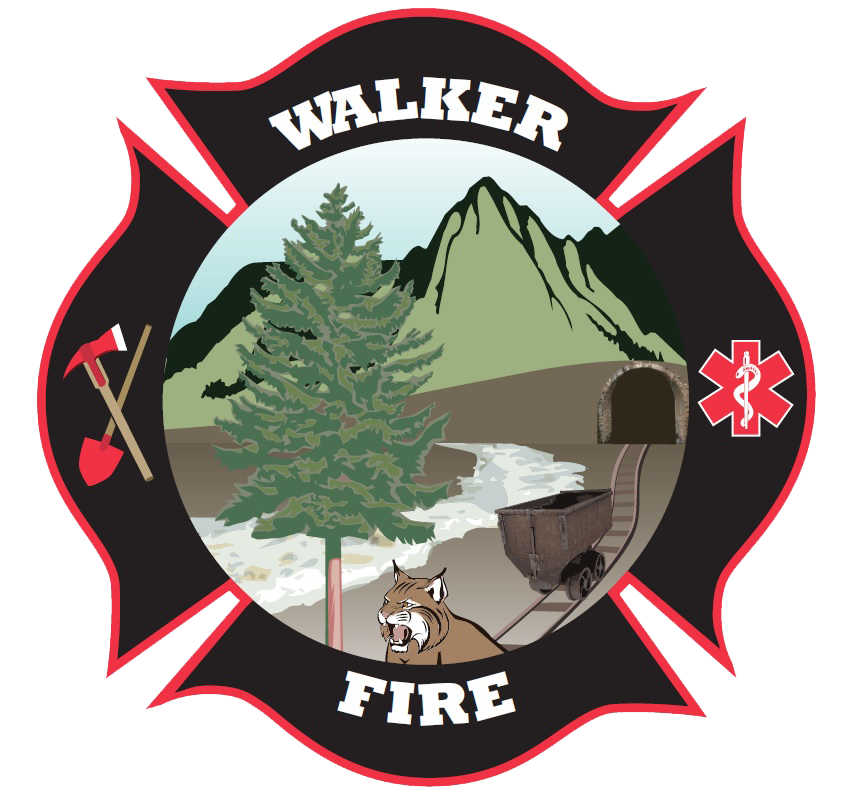Reminder: Sheriff’s Department is in control of ALL evacuations!!!
What to do before and during an Evacuation
Thank you to Charlie & Joyce Hyman, and to Phil & Peggy Zink for providing this information.
The most frightening thing about a wildfire is its unpredictability…and sometimes its speed. Should a strong wind propel the fire towards an inhabited area, no home is safe. The only solution is to gather your essentials and get out. Gladys Kastrup, local director of the American Red Cross, has compiled a list of critical things to do that you should put into effect now, not later. She’d be the first to tell you that preparedness is the key to your family’s safety and well-being.
It will pay you to be prepared. Don’t ever think that conflagrations like the Rodeo-Chediski, the Aspen Fire and the Kinishba Fire in the White Mountains can’t happen here. According to all authorities, it probably will.
WHAT TO DO NOW:
Make a list of what’s most important to take with you in an evacuation: important legal documents, photo albums, scrapbooks, medicine and medical supplies, baby needs including diapers, pet food…whatever matters most to you. Making a list now when you’re cool is much easier than trying to think during an emergency. Post your list on the refrigerator or next to the doorway in your garage.
Call a friend or relative in another city and make him or her your contact point if an evacuation of Prescott is ordered. Local calls won’t work; chances are that during a disaster you won’t be able to get through to anyone in the immediate area. Let your contact know to call the Red Cross at (928) 445-4981 for evacuation information, your whereabouts and your status. All the rest of your family and friends all over the world can call that one person for information about you. Make sure all those folks have your contact’s phone number; a few e-mails now can head off a lot of worry and grief later.
Make arrangements now for a location where you and your family can go under such circumstances. The best thing would be friends or family in the local area, but far enough away from the forest that their own risk of fire danger is minimal. Such contacts need to know that you’ll be counting on them for help if wildfire strikes.
If you don’t have someone locally to turn to, the Red Cross will have set up Reception Centers where shelter and food will be provided. Such locations will be announced on this website as well as by local radio and TV stations. They can’t be given to you now, because depending on the circumstances at the time, local officials will make a spot decision where they can set up safe Red Cross shelters.
IF EVACUATION BECOMES AN IMMEDIATE POSSIBILITY:
Listen to your battery-operated radio for reports and evacuation information. Follow the instructions of local officials.
About your car or other vehicles: back them into the garage; it’ll be much easier to drive out forward, than trying to back into a possibly jammed-up street. Shut car doors and roll up windows to keep smoke out. Leave the keys in the ignitions. Close garage windows and doors, but leave them unlocked. Disconnect any automatic garage door openers in case there is electrical failure.
Gather up all the items on the list you prepared and pack them in your vehicles.
WHEN THE EVACUATION ORDER COMES, LEAVE IMMEDIATELY.
Do not use your phone unless it is a personal emergency. This will keep phone lines open for First Responders and other critical emergency communications.
This is important!
Register at one of the Red Cross Reception Centers before heading out to your ultimate destination. If people call the Red Cross at their emergency number: (928) 445-4981, your having registered with them will enable volunteers to assure the caller that you’re okay.
Wear protective clothing–sturdy shoes, cotton or woolen clothing, long pants, a long-sleeved shirt, gloves, and a wet handkerchief or towel to help you breathe if smoke is present.
Lock your home but hang a white cloth on the front door as a signal to let emergency personnel know that no one is left in the house.
Don’t forget any of your pets. Once people leave an evacuated area, they will not be allowed back in to rescue forgotten pets.
If a fire or other emergency occurs near you and you decide to spontaneously evacuate, choose a route away from fire hazards.
Watch for changes in the speed and direction of fire and smoke. In the majority of evacuation situations, sheriff’s deputies or local police will provide you with your route and destination. Check local radio stations for the best escape routes to take, which will depend on the circumstances at hand.
For additional preparedness information, click on: Red Cross
And a final thought: it wouldn’t be a bad idea to copy and print out this evacuation information for your family and give copies of it to your neighbors and friends. Better yet if they have computers, share the address of this website with them – https://www.walkerfire.org
